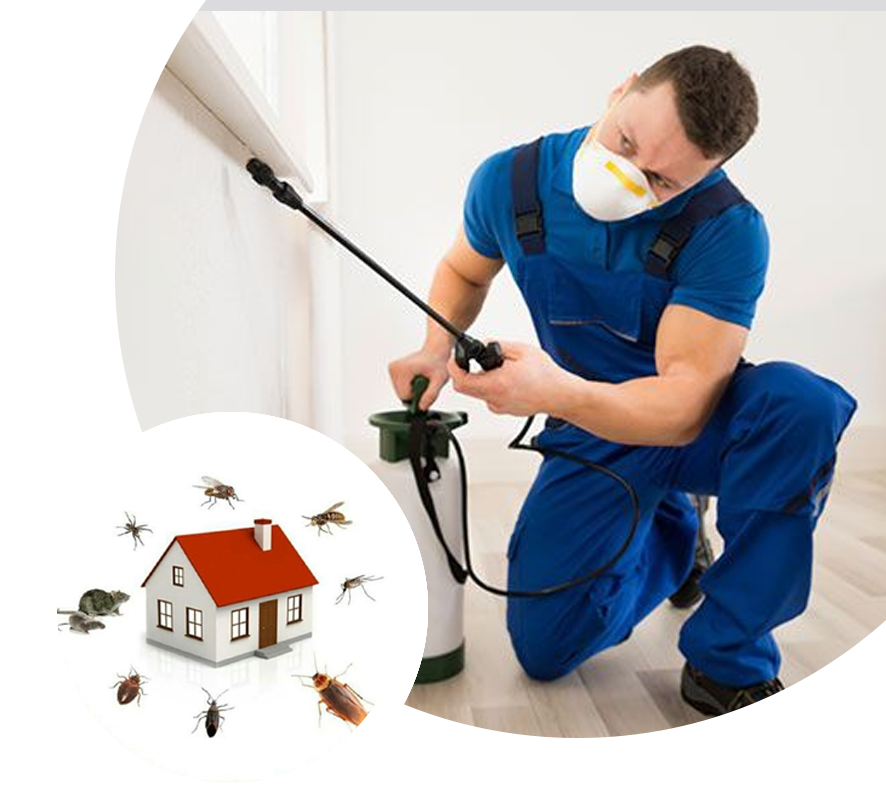Comprehensive Pest Control Services: Maintain Your Building Pest-Free!
Wiki Article
Expert Parasite Control Techniques for Long-Term Outcomes
In the realm of insect control, attaining sustained efficiency and lasting results requires a meticulous technique that transcends mere elimination. Professional insect control techniques envelop an extensive approach that begins with an extensive evaluation and assessment, complied with by accurate parasite recognition to understand their habits patterns. The implementation of Integrated Pest Administration (IPM) concepts, paired with eco-conscious therapies, develops the keystone of sustainable insect elimination. The true test lies in the continuous monitoring and maintenance of the treated areas, guaranteeing a pest-free environment for the foreseeable future. By delving right into the complexities of these strategies, a deeper understanding of professional bug control approaches for sustaining outcomes emerges.Examination and Evaluation
Upon entering a building for parasite control solutions, the preliminary action is an extensive inspection and assessment to identify the extent of the problem and figure out the most reliable treatment plan. Expert bug control technicians are trained to carefully check out the facilities, looking for indicators of parasite activity such as droppings, chomp marks, nests, or any kind of structural damages. They will certainly also evaluate the conditions that may be drawing in pests, such as food sources, water leaks, or access points.
Insect Recognition and Actions

In addition, understanding the behavior of the recognized insect is key to applying reliable control steps. Knowing where pests nest, what they feed on, and their activity patterns can aid pest control experts develop strategies to eradicate them effectively.
Integrated Pest Monitoring (IPM)
Integrated Parasite Administration (IPM) approaches combine several methods to control and prevent Discover More Here bug problems in a lasting and eco-friendly fashion. Pest control Washington DC. By integrating approaches such as organic control, environment control, modification of cultural methods, and making use of immune selections, IPM aims to reduce using chemical pesticidesOne of the crucial concepts of IPM is Homepage the focus on prevention. This proactive technique entails surveillance pest populations frequently to discover any type of possible problems prior to they rise. By determining pest problems early on, pest control steps can be applied quickly and properly.
Additionally, IPM advertises making use of safe insect control techniques whenever possible. This can consist of using all-natural predators of the pests, presenting valuable bugs, or using scents to disrupt breeding patterns. By decreasing reliance on chemical pesticides, IPM not just protects the setting however likewise aids preserve a balance in the ecosystem.
Environmentally-Friendly Treatments
Implementing eco-conscious methods in parasite control treatments can effectively deal with invasions while focusing on environmental sustainability. Environmentally-friendly therapies concentrate on decreasing the influence of pest control methods on ecological communities, non-target microorganisms, and human health. These approaches commonly entail using natural predators, such as ladybugs or nematodes, to control pest populations, reducing the requirement for chemical interventions. Additionally, strategies like habitat control, such as readjusting moisture levels or eliminating food resources, can assist prevent bugs without the usage of damaging compounds.One more key facet of environmentally-friendly treatments is the usage of organic and biodegradable products that damage down promptly without leaving dangerous deposits in the atmosphere. Agricultural insecticides originated from plants like chrysanthemums or neem use effective parasite control while posturing marginal danger to non-target species. Employing techniques like warm treatments or pheromone catches can target particular parasites with accuracy, minimizing the general ecological effect of parasite control practices.
Continuous Tracking and Upkeep
Regular monitoring and upkeep are essential elements of effective parasite control monitoring. Ongoing surveillance plays a vital duty in ensuring that parasite infestations are detected very early and managed immediately. Regular examinations by experienced experts are required to determine any type of indications of bug task, examine the efficiency of previous treatments, and make changes to the parasite control strategy as required. view website By checking bug populaces gradually, parasite control experts can track fads, prepare for potential problems, and apply precautionary measures to minimize the danger of future invasions.
Along with surveillance, upkeep methods are vital for long-term bug control success. This includes executing appropriate cleanliness steps to remove potential food and water sources for insects, securing off access indicate avoid bugs from getting in the properties, and resolving any structural problems that could assist in insect problems (Exterminator DC). By incorporating continuous tracking and maintenance into an integrated pest management approach, companies can ensure a pest-free atmosphere and secure their residential property versus expensive damages and health and wellness risks
Conclusion
To conclude, utilizing professional insect control methods such as comprehensive assessment and evaluation, accurate pest recognition and understanding of their behavior, integrated bug administration techniques, environmentally-friendly treatments, and continuous surveillance and maintenance are important for accomplishing lasting lead to bug control. By applying these methods, people can efficiently take care of insect infestations and keep a pest-free environment in a lasting fashion.Report this wiki page